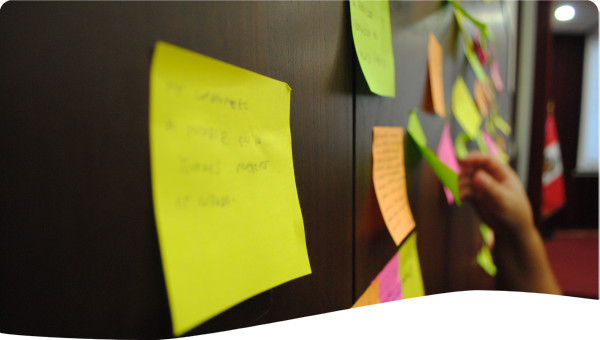The Veluwe Randmeren lakes in the Netherlands were negatively affected by the discharge of phosphates and nitrates from agriculture and household use. Furthermore, increase in population pressure posed further challenges. To address these issues, a group consisting of national and local authorities undertook a project, which gradually increased the water quality. The case study demonstrates the importance of allowing integration among stakeholder groups.
With the construction of the Afsluitdijk (IJsselmeer dam) in 1932, the Zuyderzee in the Netherlands was closed off from the sea. Over the years, the salinity of the newly formed lake declined. In the period 1956 – 1967, the polder Flevoland was constructed. After completion, four lakes, located between the polder and the “old land”, were formed. These four lakes are called the Veluwe Randmeren (Veluwe border lakes).
In the 1960s and 1970s, it became clear that the discharge of phosphates and nitrates from agriculture and household use was having a negative impact on the water quality in the lakes because of the excessive growth of algae which turned the water in the Randmeren into a “green soup”. This prevented the growth of water plants and, consequently, effected the fish population.
To address this issue, in 1986, a group consisting of national and local authorities undertook a project, which gradually increased the water quality.
In the 1990s, the lake region started attracting more and more people, thus posing new threats to the sustainable development of the region. To balance the natural and recreational functions in and around the Veluwe border lakes, a coalition of 19 authorities, interest groups, industries and individuals, joined forces and agreed to work on an integrated planning project for the Veluwe Randmeren.
Having previously experienced delays in the realization of plans, the relevant 19 authorities wanted to draw one combined plan in order to aid close cooperation with interest groups and citizens.
To exchange and make use of information as efficiently as possible during meetings, several methods were developed. One method was to enlist the services of cartoonists. The use of this medium to display discussion points made many of the complex issues crystal clear at a glance.
A distinct structure of planning process was also adopted consisting of four phases which were
- Problem definition
- Draw up of planning strategies
- Design of region plan
- Execution.
In the first phase, all issues were classified in three categories which were:
- Category I: the solution fit within the existing policies and needed administrative, juridical and/or financial attention.
- Category II: the solution was not obvious. Knowledge and creativity needed to be applied to reach a solution. Once the solution is determined the administrative, juridical and financial aspects will be studied.
- Category III: the solution was outside the scope of the project, as defined in the process plan, for administrative, juridical or financial reasons.
The result was then compiled into a booklet before starting the second phase. The second phase involved working sessions with experts who processed all ideas and checked them against the operative policy. The results were the formation of steering group and the selection of building blocks for the regional plan The third phase involved transforming these building blocks into concrete measures for the plan. In June 2001, 36 measures were determined in the planning program and seven packages of measures were identified which were:
- Water Package
- Wet Nature Package
- Water Sport Package
- Use of shore of Flevoland Package
- Recreation Flevoland Package
- Use of shore of Gelderland Package
- Recreation Gelderland Package.
The final phase spanning between 2002-2010 was the execution phase where these 36 measures were to be executed and the public was kept in the loop through annual presentations and newsletters.
The realisation of the measures will be implemented over the period 2002 – 2010. During this time period impact assessments, conducted by experts, will be carried out on several aspects of the project.
Allowing stakeholders the opportunity to interact and convey their ideas and interests helped when unexpected problems arose, forming the basis for collaboration in the execution phase, and Insured that upon execution, all participants had the same perception of the project.
Both the communication between all parties involved and the technical issues played an important role in this project. In total about 300 people helped define the problems in the Veluwe Randmeren.
The methods applied in this study may be applied in other studies where many parties with conflicting interests are involved. All activities have been described in reports, making it relatively easy to transfer the methods used to other studies.
 Case studies
Case studies
